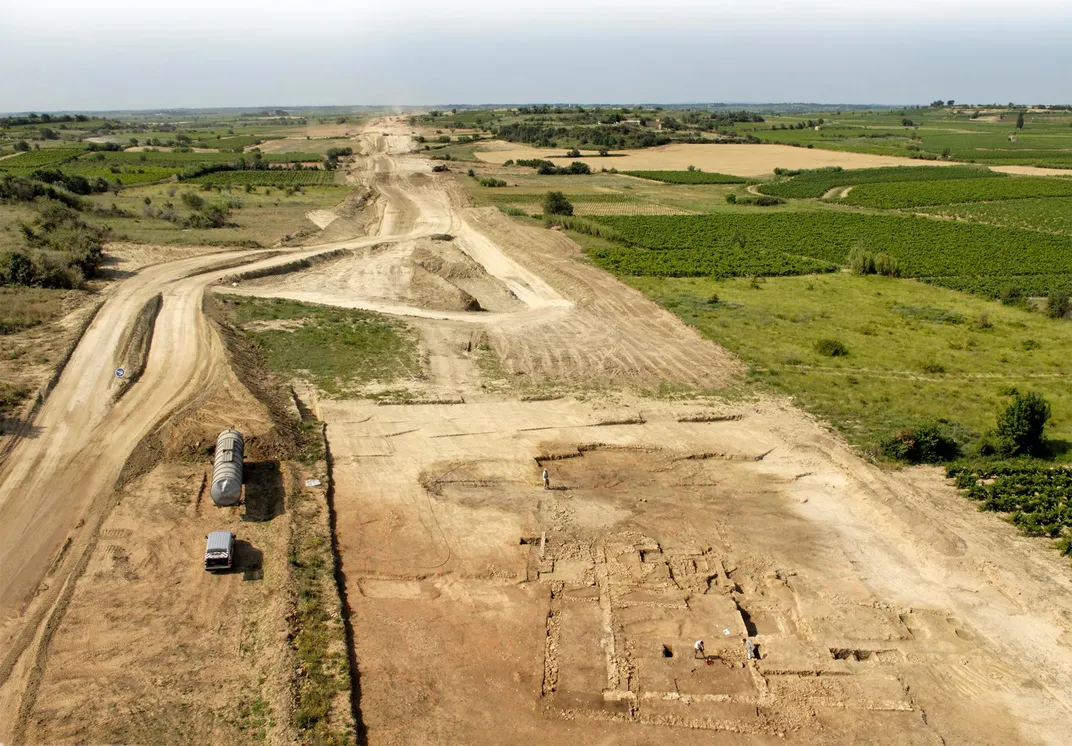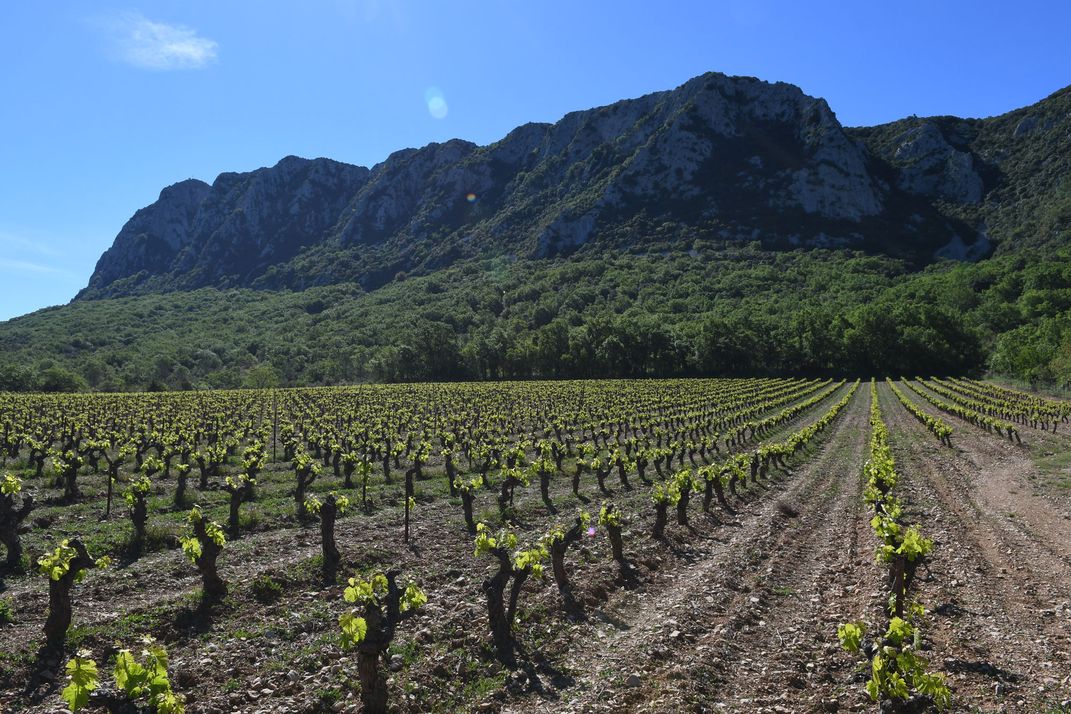Ancient Grape DNA Tells the Prolific History of Wine
Grape seeds dating back to medieval and Roman periods share many similarities with the wine grapes we enjoy today
:focal(1009x657:1010x658)/https://tf-cmsv2-smithsonianmag-media.s3.amazonaws.com/filer/86/ee/86ee602d-a6e1-49a9-9bc1-062b8feba0cb/gettyimages-122213633.jpg)
Vin jaune, literally "yellow wine," is not your typical French white. The rare wine is made in the Jura region of eastern France. It matures under a veil of yeast in a barrel for at least six years, during which time it develops a golden color and an intense, nutty aroma that apparently pairs well with Comté cheese. It also attracts hardcore wine enthusiasts. A 244-year-old bottle of the yellow stuff sold at auction last year for $121,000.
Now vin jaune has a new distinction. Scientists discovered that people have historically enjoyed the grape variety so much that it's been cultivated for at least 900 years.
Researchers conducted DNA tests on 28 samples of grape seeds dug out of waterlogged wells, dumps and ditches at archaeological sites across France. The results, published today in the journal Nature Plants, show strong connections between modern wine grapes and those used as far back as the Roman period.
To propagate grapevines, farmers often use cuttings from a preferred plant to grow new, genetically identical vines. The practice means that, theoretically, the DNA of an ancient grape and a modern grape of the same variety should be the same. Though many wine varieties we know and love allegedly have ancient pedigrees, it's hard to know whether the pinot noir or syrah we drink today is really the same type of wine that filled the cups of French monks or Roman magistrates.
Nathan Wales, of the University of York, and colleagues study DNA from archaeological plant remains to learn more about ancient agricultural practices. The researchers decided to look more closely at ancient grapes so they could compare the genetic information to a growing body of reference data for different varieties of modern and wild grapes.

Wales and his colleagues were able to sequence the entire nuclear genome of 28 grape seeds. One seed, pulled from a medieval cesspit in the remains of a monastery in Orléans, central France, was a perfect match with the modern savagnin blanc grape.
Not to be confused with the better-known sauvignon blanc, savagnin blanc is a white wine produced today in eastern France and parts of Germany. The same grape is also used to make vin jaune. The seed found in Orléans dates to 1050 to 1200 AD, several hundred years before savagnin blanc is even mentioned in historic texts.
"What that means is that this variety has been around for at least 900 years," Wales says. "Genetically, it's identical. It has been maintained through cuttings. We didn't previously know how long different varieties were maintained."
The researchers also found archaeological samples dating to the Roman period that were very close to modern grape varieties.
"We didn't find [another] perfect match, but we can see that winemakers have maintained certain varieties for hundreds of years," Wales says. "That gives us a new insight into the cultural relevance of wine and how long certain traditions can be maintained."
For example, the team found genetically identical seeds dating to the second century in Roman wells at the sites of Horbourg-Wihr in eastern France and La Lesse-Espagnac in southern France. These seeds were just one generation removed from Mondeuse Blanche, a white grape grown today in the Savoy region. The connection means there was just one reproductive cycle in this grape lineage over the past 1,800 years.

The researchers also found that the Romans grew grape varieties in southern France that are closely related to the grape varieties grown today in the Swiss Alps to produce the white wines arvine, amigne and humagne blanc. The findings offer scientific evidence to support tales from folklore which hold the Romans indeed brought amigne to Switzerland.
The wine industry has a clear interest in assembling DNA data for grapes. Genetic testing helps root out misnomers and put to bed longstanding wine mysteries. For example, DNA tests of zinfandel show that this American favorite is genetically identical to Italian primitivo (and that both are also identical to an obscure Croatian grape called crljenak kaštelanski).
The DNA data of ancient grapes is harder to come by, so the researchers collaborate with archaeologists in France working to excavate sites like monasteries, farms and Roman settlements where there is evidence of grape cultivation and winemaking. When the archaeologists find grape seeds, they freeze the organic material as soon as possible to preserve the DNA.
"This is a phenomenal dataset that they've been able to put together," says Logan Kistler, curator of archaeobotany and archaeogenomics at the Smithsonian’s National Museum of Natural History, who wasn't involved in the study. "You can sequence all the genomes in the world, but unless you know what questions to ask, it just might not make sense. They were able to ask specific questions and get really cool, 'smoking gun' answers."

It's hard to know what the ancient and medieval wines would have tasted like, even if the grapes were genetically identical or similar to modern grape varieties. A host of environmental conditions can affect the final product, and winemakers have historically added other ingredients, like pine resin, to wine.
Wales and his colleagues also found some grape seeds that were not closely connected to any known varieties. Would it be possible for future scientists to resurrect a lost grape? "It's ethically less complicated than bringing back the mammoth," Wales says, "but I think you'd still have to have a good reason to do so."
For now, we will just have to imagine what the wine of ancient emperors and abbots tasted like, perhaps while enjoying something of similar, if more modern, stock.